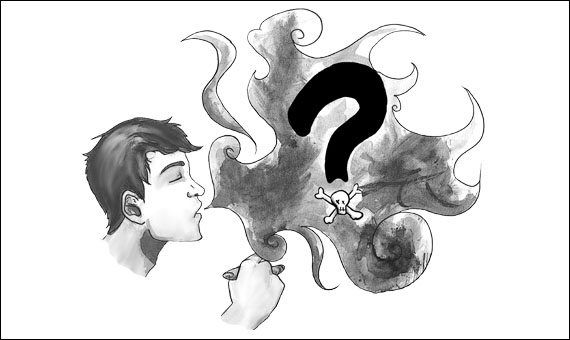

The use of marijuana for recreational and medicinal purposes has long been a controversial topic in California and the United States. With the risk of legal prosecution in the United States for marijuana possession, many people have turned to synthetic marijuana (sold under brand names such as Spice and K2). These drugs were made illegal in California and the United States in 2011 due to the severe health damages caused by smoking Spice and K2.
Chemicals that imitate the effect of marijuana when inhaled were invented by former Clemson chemistry professor John W. Huffman in the 1990’s. At the time, Huffman was conducting scientific research on cannabinoids after receiving a grant from the National Institute for Drug Abuse. He created 400 JWH cannabinoids in all, but claims that creating an alternative to marijuana was never his intention.
After publishing his research on how to create his marijuana-like chemicals, reports of people using those combinations of chemicals to get high surfaced in several locations around the world. Soon, Spice and other brands were being manufactured in China and sold internationally.
Spice was first sold legally in 2004 with K2 following in 2008. At that time, the drugs contained about five chemicals (called synthetic cannabinoids) that were legal in the United States, allowing them to be sold in smoke shops, gas stations and online.
This changed in 2011 when the United States Drug Enforcement Administration declared several synthetic cannabinoids illegal for human consumption (a few of which were used in Spice and K2). In California, Governor Jerry Brown made the sale of synthetic marijuana a crime punishable by imprisonment, a fine or both. However, it is still sold in some head shops as incense.
The reverse legalization of these chemicals was due to the severe health hazards that occurred when Spice and K2 were inhaled. Unlike the predictable consequences of inhaling marijuana, Spice and K2 were erratic in their effects. The use of Spice and K2 has been linked to problems including psychosis, increased blood pressure, anxiety, heart attacks and suicide.
In a 2011 interview with ABC News, Huffman said, “The physiological effects of JWH compounds have never been examined in humans. What we do know is that it doesn’t hit the brain in the same way as marijuana, and that’s why it’s dangerous.”
Spice and other synthetic marijuana products differ from marijuana because of their chemical composition and physical appearance. Because Spice is not grown or derived straight from a plant, it has a more fuzzy and fluffy appearance.
As of now, the general public knows very little about Spice and K2. Since no serious scientific research has been published, the public has been left with the testimonies of friends and peers to know what kind of highs Spice and K2 create. Says a male senior, “I’ve never used it, but I have heard that its effects are similar to weed, only not as pleasing.”
A female sophomore has also heard about Spice usage through friends. She says, “I’ve heard it mentioned a few times, but it’s still pretty rare. However, I have heard that its effect is ‘fun’ even if it isn’t quite as strong as weed.”
In addition to its varying effects from marijuana, Spice is now harder to obtain than marijuana. Says a female sophomore, “Because it’s harder to make and not as popular, I think that it’s easier to buy weed than Spice. People just know more about [weed].”
Another factor in the marijuana versus Spice debate is the origin of the drug. While marijuana is a plant whose leaves are dried and pressed, Spice is entirely created in a lab using JWH chemicals. Says a senior, “I wouldn’t trust Spice because it’s not natural. Anything man-made in a lab is unreliable. I would never use it.”
A sophomore agrees, saying, “Spice has a reputation as extremely chemical, which is not necessarily a good thing. Marijuana weed is more natural because it’s a plant that grows and is found in nature. It’s like when you look at apples in a grocery store. You want the organic one, not the one grown with chemicals.”
Spice and K2 have gained significant popularity among high school and professional athletes. A former NFL player reported to the Yahoo! PostGame in 2011 that he used marijuana in the off-season but switched to K2 during the season because it did not show up on his drug tests.
Incidentally, Huffman agrees. In an interview with ABC News, he stated, “If the federal government would legalize the real thing, maybe consumers wouldn’t turn to the far more dangerous fake stuff.”



